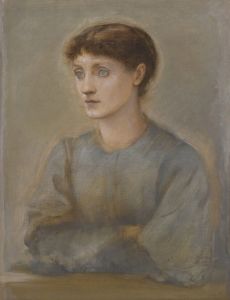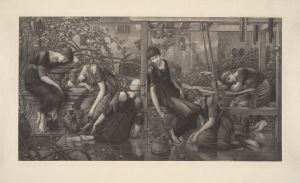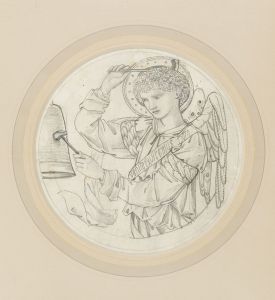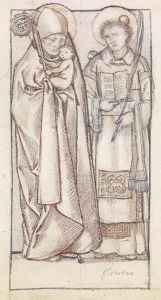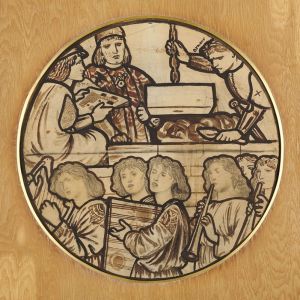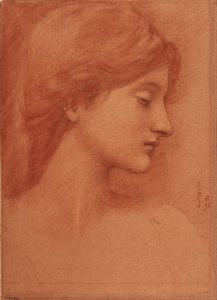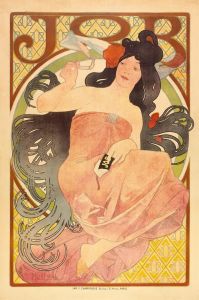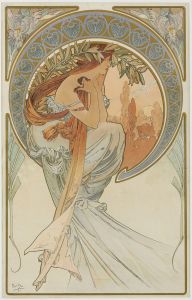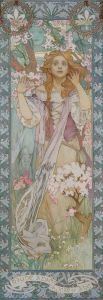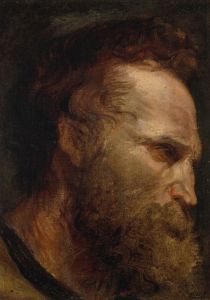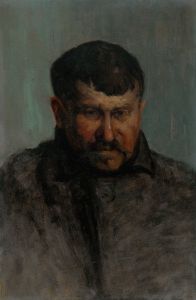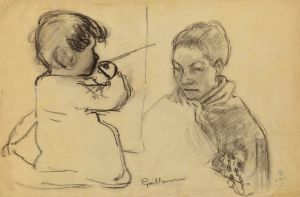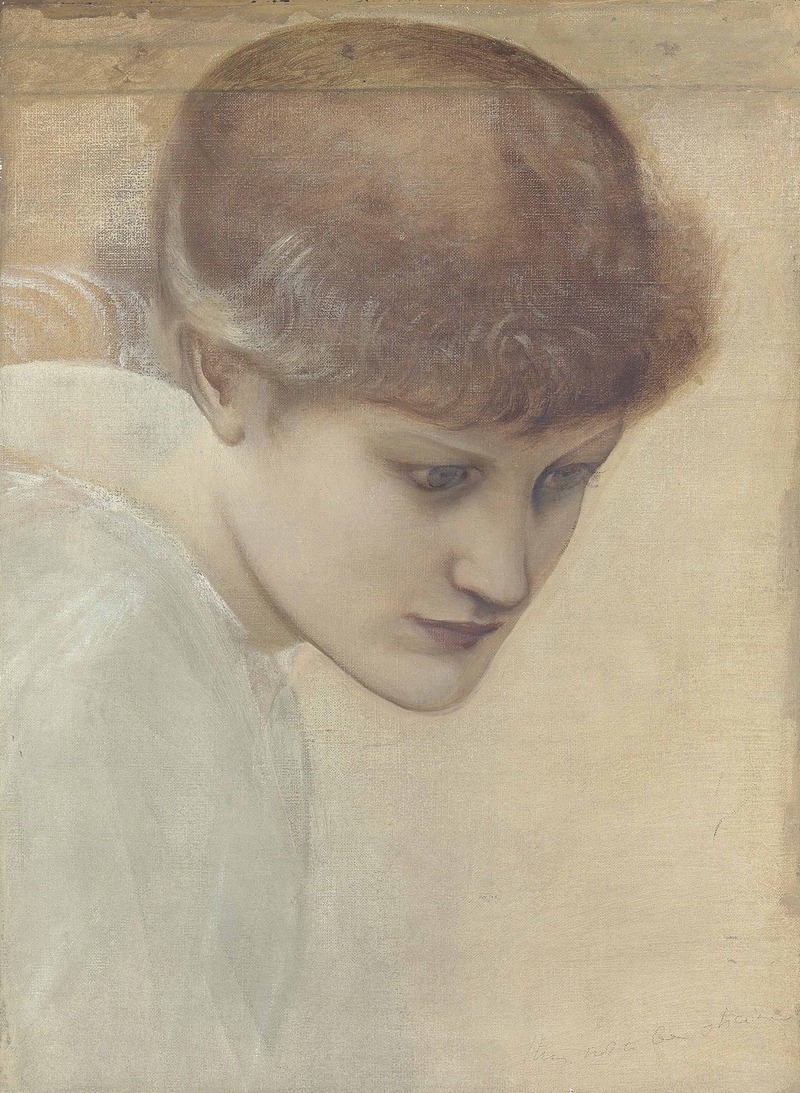
Head study of Dorothy Dene looking downwards, for ‘The Golden Stairs’
A hand-painted replica of Sir Edward Coley Burne-Jones’s masterpiece Head study of Dorothy Dene looking downwards, for ‘The Golden Stairs’, meticulously crafted by professional artists to capture the true essence of the original. Each piece is created with museum-quality canvas and rare mineral pigments, carefully painted by experienced artists with delicate brushstrokes and rich, layered colors to perfectly recreate the texture of the original artwork. Unlike machine-printed reproductions, this hand-painted version brings the painting to life, infused with the artist’s emotions and skill in every stroke. Whether for personal collection or home decoration, it instantly elevates the artistic atmosphere of any space.
"Head study of Dorothy Dene looking downwards, for ‘The Golden Stairs’" is a preparatory drawing by the British artist Sir Edward Coley Burne-Jones. This artwork is part of the extensive body of work created by Burne-Jones, who was a leading figure in the Pre-Raphaelite Brotherhood, an art movement that sought to return to the detail, intense colors, and complex compositions of Quattrocento Italian art.
Dorothy Dene, the subject of this study, was a well-known model and actress of the Victorian era. She was born Ada Alice Pullen in 1859 and became a favored model for many artists of the time, including Burne-Jones. Her association with Burne-Jones is particularly noted for her role as a muse and model in several of his works. Dene's classical features and expressive demeanor made her an ideal subject for the Pre-Raphaelite artists, who valued beauty and emotion in their representations.
"The Golden Stairs," for which this head study was created, is one of Burne-Jones's most celebrated paintings. Completed in 1880, the painting depicts a procession of young women descending a spiral staircase, each playing a musical instrument. The work is renowned for its ethereal quality and the harmonious arrangement of figures, which exemplify Burne-Jones's interest in themes of beauty and transcendence. The painting is housed in the Tate Britain gallery in London.
The head study of Dorothy Dene is a testament to Burne-Jones's meticulous approach to his compositions. Such preparatory studies were common in his artistic process, allowing him to explore different expressions and angles before committing to the final work. This particular study captures Dene in a contemplative pose, looking downward, which reflects the introspective and serene qualities often found in Burne-Jones's figures.
Burne-Jones's work, including this study, is characterized by a blend of medieval romanticism and a keen attention to detail. His art often draws on mythological and literary themes, creating a dreamlike atmosphere that invites viewers into a world of fantasy and reflection. The Pre-Raphaelite movement, with which Burne-Jones is closely associated, was a reaction against the industrialization of the 19th century, advocating for a return to craftsmanship and the beauty of nature.
The drawing of Dorothy Dene for "The Golden Stairs" not only highlights Burne-Jones's skill in capturing human emotion and beauty but also underscores the collaborative relationship between artist and model. Dene's contribution to the art of the period extends beyond her role as a model; she was an influential figure in the cultural landscape of Victorian England.
In summary, the "Head study of Dorothy Dene looking downwards, for ‘The Golden Stairs’" is a significant piece within Burne-Jones's oeuvre, illustrating his artistic process and the aesthetic ideals of the Pre-Raphaelite Brotherhood. It remains an important example of the collaborative nature of art during the Victorian era, showcasing the interplay between artist and muse in the creation of enduring works of beauty.






